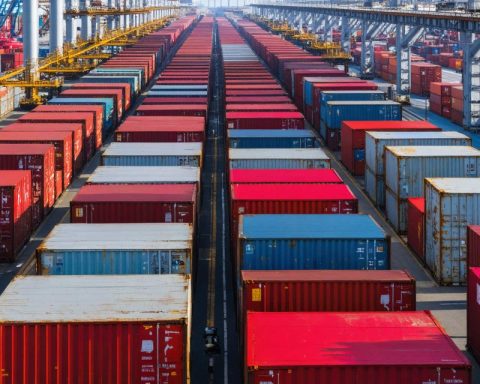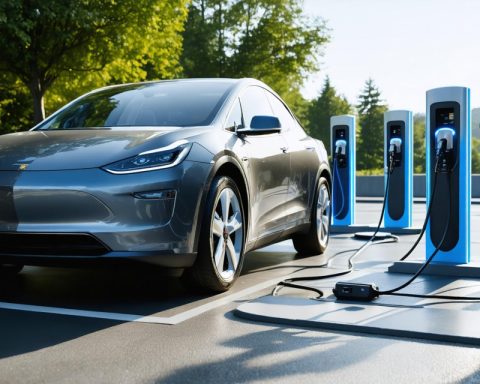- Trafigura, a Swiss commodities leader, has pulled back from a 750-million-Australian-dollar green hydrogen project in Port Pirie, South Australia.
- The project aimed to transform the local lead smelter with hydrogen derived from renewably powered water.
- Despite a promising feasibility study, specific reasons for Trafigura’s withdrawal remain undisclosed.
- High infrastructure costs and weak market demand challenge Australia’s green hydrogen ambitions.
- The South Australian government hoped for project success but did not integrate it into a broader strategy.
- Globally, energy firms reevaluate green hydrogen projects due to cost and profitability concerns.
- Trafigura’s decision highlights the need for cautious and thorough planning for clean energy projects.
- The path to sustainable industrial adoption of green hydrogen in Australia remains uncertain and complex.
In the sunlit expanse of South Australian industry, a significant shadow has emerged as Trafigura, a prestigious Swiss commodities titan, steps back from its ambitious green hydrogen project in Port Pirie. This venture, valued at a staggering 750 million Australian dollars, was envisioned as a game-changer—a cleaner future for the local lead smelter, fueled by environmentally friendly hydrogen produced from water-powered by renewable electricity.
Drenched in aspiration, the Port Pirie project promised to slice through the thick carbon-heavy veil of industrial emissions. Yet, even with a promising feasibility study funded in tandem with the South Australian regional government, Trafigura halted its efforts. Their reticence lies partly hidden, as specific reasons remain undisclosed, but their message rings loud—they will not tread beyond mere contemplation into action.
This is not an isolated retreat. Trafigura’s decision threads a familiar narrative in Australia—a land replete with dreams of green hydrogen, but where dreams frequently stall before breaking ground. High infrastructure costs, tangled logistical webs, and tepid market desire make rapid commercial success elusive.
The South Australian government, while never weaving this project into its larger strategic tapestry, was hopeful. Yet, like a lighthouse swallowed by fog, the supposed beacon of green hydrogen dims gradually across the continent. The nascent industry faces formidable hurdles, even with the Australian federal government’s enthusiastic participation in funding pilots and laying the foundation for necessary infrastructure.
Globally, Trafigura’s move reverberates in concert with a broader concerto of hesitance. Around the world, energy giants are pausing, recalibrating dreams with the looming specter of delayed profitability. They navigate choppy waters, where conventional fuel systems are entrenched, and green hydrogen still seeks not just a market toe-hold but an entire foothold.
For South Australia, losing one of its most anticipated private ventures is a jarring reality check. It brings into sharp focus the economic equilibrium—or lack thereof—needed to pivot green hydrogen into an industrial mainstay. The cancellation underscores an imperative truth: ambitious projects orbiting clean energy must first conquer rigorous feasibility landscapes before alighting on the bustling terrain of industrial adoption.
Trafigura’s withdrawal serves as a clarion call for careful scrutiny and patience. The green hydrogen chapter in Australia isn’t desolate, but it’s marked by caution, where innovation must tread carefully, preparing meticulously for the path towards a sustainable future.
The Unseen Challenges of Green Hydrogen: Why Trafigura Pulled Back From South Australia’s Ambitious Project
Understanding Trafigura’s Withdrawal from Green Hydrogen in South Australia
Background
South Australia’s dream of leveraging green hydrogen to revolutionize its industrial sector has hit a stumbling block. Trafigura, a major player in global commodities, decided to abandon its $750 million AUD investment in a green hydrogen project in Port Pirie. This venture, poised to power one of the most carbon-intensive industries with sustainable energy, faced significant economic and strategic hurdles.
The Green Hydrogen Landscape: Challenges and Limitations
High Infrastructure Costs
– Economic Viability: The initial investment for green hydrogen infrastructure is substantial, involving the construction of electrolysis plants powered by renewable energy sources. Currently, the cost per kilogram of green hydrogen remains high compared to conventional fuels.
– Technological Barriers: Efficient storage and transportation of hydrogen require sophisticated and costly technologies, which are still under development and not widely deployed at scale.
Market Dynamics
– Demand Uncertainty: Although green hydrogen holds great promise, the market readiness is still in its early stages. Many industries are hesitant to switch from conventional fuels due to concerns over reliability and cost-effectiveness.
– Global Competition: Countries worldwide, including the US, Germany, and Japan, are pouring resources into becoming leaders in the green hydrogen economy, creating a competitive market for investment and development.
Real-World Use Cases and Industry Trends
Innovative Implementations
– Heavy Industry Transition: Companies like Hyundai and Toyota are pioneering hydrogen-powered vehicles, encouraging an ecosystem where industrial use, such as mining and smelting, could also transition to green hydrogen over time.
– Energy Storage Solutions: Green hydrogen can serve as an energy storage medium, balancing supply and demand in renewable energy grids.
Industry Trends
– Policy and Regulation: In many countries, governments are ramping up policies favoring green hydrogen through incentives and subsidies, aiming to reduce infrastructure costs and attract private investment.
– Collaboration and Partnerships: Cross-industry and international collaborations are viewed as crucial to overcoming scalability and technological challenges.
Insights and Predictions
The Future of Green Hydrogen
Despite setbacks, the green hydrogen industry is growing, projected to be a trillion-dollar market by 2050. Advances in technology, government support, and strategic partnerships are expected to accelerate adoption.
Australia’s Positioning
Australia remains strategic in the global green hydrogen map due to its ample renewable energy resources. Although Trafigura’s retreat marks a setback, other projects may proceed, boosted by both governmental and private sector efforts.
Recommendations and Tips
1. Investment Diversification: Investors should diversify across multiple emerging green technologies to mitigate risk.
2. Continued Innovation: Companies should focus on R&D to drive down technology costs, particularly in electrolysis and hydrogen storage.
3. Policy Engagement: Engage with policymakers to create favorable environments for green hydrogen development through subsidies, infrastructure support, and favorable regulations.
For those interested in greener initiatives, understanding the dynamic field of energy, including the ongoing developments in green hydrogen, can provide critical insights into future investment and energy strategies.
Related Link
For additional information on the current energy landscape, explore Shell’s main site.
—
By adopting a strategic and patient approach, stakeholders in the energy sector can navigate the challenges of transitioning to green hydrogen, paving the way for a more sustainable future.














